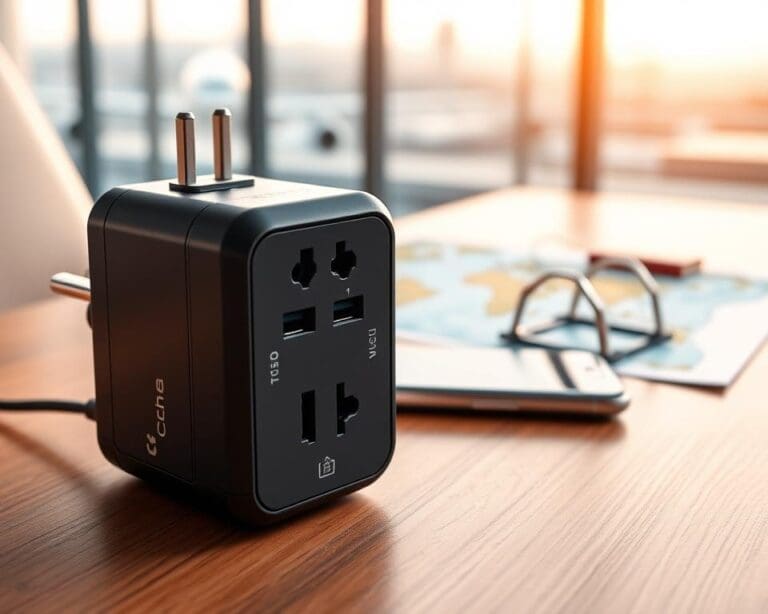A good night’s sleep is essential for overall health and wellbeing. One of the critical factors that determine the quality of your sleep is the mattress you sleep on. A suitable mattress can make all the difference, providing the necessary support and comfort for a restful night’s sleep.
Selecting the right mattress can be a daunting task, given the numerous options available in the market. However, by understanding the science behind sleep and mattress quality, you can make an informed decision. In this article, we will guide you through the process of mattress selection and help you choose a mattress that promotes healthy sleep.
Key Takeaways
- Understand the importance of mattress quality for healthy sleep
- Learn about different types of mattresses and their features
- Discover essential factors to consider when choosing a mattress
- Get insights into the science behind sleep and mattress quality
- Make an informed decision when selecting a mattress
The Science of Sleep and Mattress Quality
The science behind sleep reveals that a mattress plays a pivotal role in determining the quality of our rest. Sleep is a complex process involving multiple stages, including REM (rapid eye movement) and non-REM sleep, each crucial for physical and mental rejuvenation.
The Sleep Cycle and How Mattresses Affect It
A mattress that provides the right support and comfort can significantly enhance sleep quality by ensuring uninterrupted sleep cycles. During the sleep cycle, the body goes through various stages, including light sleep, deep sleep, and REM sleep. A supportive mattress helps maintain proper spinal alignment, reducing the likelihood of waking up during the night due to discomfort or pain.
Proper spinal alignment is key to preventing back pain and other sleep-related issues. A mattress that is too firm or too soft can disrupt this alignment, leading to a poor night’s sleep.
Physical and Mental Health Benefits of Proper Support
A good mattress supports the body, ensuring that you wake up feeling refreshed and rejuvenated. Proper support from a mattress can lead to numerous physical and mental health benefits, including reduced back pain, improved posture, and enhanced mental clarity.
Moreover, a supportive mattress can help alleviate sleep disorders and improve overall sleep quality. By choosing the right mattress, individuals can significantly improve their sleep and, consequently, their overall health and well-being.
Understanding Different Mattress Types
With numerous mattress options available, it’s crucial to comprehend the different types and their characteristics. The primary mattress types include memory foam, innerspring, latex, and hybrid mattresses, each catering to different sleep preferences and needs.
Memory Foam Mattresses
Memory foam mattresses are renowned for their contouring support and pressure relief. They conform to the body’s shape, providing a customized sleeping surface.
Density and Response Time Considerations
When choosing a memory foam mattress, consider the density and response time. Higher density often means more durability, while a slower response time can indicate better pressure relief.
Innerspring Mattresses
Innerspring mattresses feature a coil support system and are often preferred for their breathability and traditional feel. The coil count and gauge are critical factors in determining the mattress’s support and comfort.
Coil Count and Gauge Explained
A higher coil count typically offers better support, while a lower gauge indicates thicker, more robust coils. Understanding these factors can help in selecting an innerspring mattress that meets your needs.
Latex Mattresses
Latex mattresses are known for their breathability, durability, and eco-friendly attributes. They come in natural and synthetic forms, each with its own set of benefits.
Natural vs. Synthetic Latex
Natural latex is derived from rubber trees and is biodegradable, while synthetic latex is manufactured and offers a more affordable option. The choice between the two depends on personal preference and budget.
Hybrid Mattresses
Hybrid mattresses combine different materials, such as memory foam and innerspring coils, to offer a balanced sleeping experience. They aim to leverage the benefits of each material to provide both comfort and support.
| Mattress Type | Key Features | Benefits |
|---|---|---|
| Memory Foam | Contouring support, pressure relief | Customized comfort, pain relief |
| Innerspring | Coil support system, breathability | Traditional feel, good support |
| Latex | Breathability, durability, eco-friendly | Cooling, sustainable, long-lasting |
| Hybrid | Combination of materials | Balanced comfort and support |
As highlighted by a study on sleep quality, “The right mattress can significantly impact sleep quality and overall health.” Understanding the different mattress types and their characteristics is crucial in making an informed decision that suits your sleep needs.
“A good mattress is the foundation of a good night’s sleep.”
Essential Mattress Features to Evaluate
To find the ideal mattress, it’s vital to assess certain critical features that impact sleep quality. A mattress that meets your specific needs can significantly enhance the quality of your sleep, leading to better overall health and well-being.
Firmness Levels Explained
The firmness of a mattress is a personal preference, ranging from soft to firm. Firmness levels are typically categorized on a scale from 1 to 10, with 1 being the softest and 10 being the firmest. Choosing the right firmness is crucial as it directly affects the comfort and support of the mattress.
For instance, side sleepers often prefer a softer mattress to cushion their pressure points, while back sleepers may prefer a medium-firm mattress to maintain proper spinal alignment.
Support Systems and Spinal Alignment
A good mattress should provide adequate support systems to maintain proper spinal alignment. This is crucial for preventing back pain and ensuring a restful night’s sleep. Support systems can vary from innerspring coils to foam layers, each designed to provide the necessary support and maintain the natural curve of the spine.
A mattress with proper support will keep the spine aligned, regardless of the sleeper’s position, thereby reducing the risk of back and neck pain.
Motion Isolation Technology
For those sharing a bed with a partner, motion isolation technology is an important feature to consider. This technology minimizes the disturbance caused by a partner’s movements, ensuring a more peaceful sleep. Mattresses with advanced motion isolation can significantly reduce the transfer of motion, making them ideal for couples.
Memory foam mattresses are known for their excellent motion isolation properties, as they absorb movement rather than transferring it.
Temperature Regulation Capabilities
Temperature regulation is another critical feature that can impact sleep quality. A mattress that regulates temperature effectively can prevent overheating and maintain a comfortable sleeping temperature throughout the night. Materials such as gel-infused foam and breathable fabrics are often used to enhance temperature regulation.
A cooler sleep environment can lead to deeper, more restful sleep, making temperature regulation a key consideration when selecting a mattress.
In conclusion, evaluating these essential mattress features—firmness, support systems, motion isolation, and temperature regulation—will help you find a mattress that meets your specific needs and enhances your sleep quality.
Matching Your Sleep Position to the Right Mattress
Your sleep position is a key factor in choosing a mattress that provides the necessary comfort and support. Different sleeping positions exert varying levels of pressure on the body, and the right mattress can help alleviate potential discomfort or pain.
Ideal Mattresses for Side Sleepers
Side sleepers need a mattress that cushions their pressure points, particularly at the shoulders and hips. A softer to medium-firm mattress is often recommended as it allows for the necessary sinkage to keep the spine aligned. Memory foam mattresses are popular among side sleepers due to their pressure-relieving properties.
Best Options for Back Sleepers
Back sleepers require a mattress that supports the natural curve of their spine. A medium-firm mattress is generally considered ideal as it provides the necessary support without being too hard. Latex mattresses are a good option for back sleepers due to their breathability and support.
Recommended Solutions for Stomach Sleepers
Stomach sleepers need a firmer mattress to keep their hips aligned and prevent their spine from sinking out of alignment. Innerspring mattresses or hybrid models with a firmer comfort layer can be suitable for stomach sleepers.
Combination Sleepers and Adjustable Options
For those who switch between different sleep positions, an adjustable mattress can be beneficial. These mattresses allow for customization of firmness and support, catering to different needs based on the sleeper’s position. Adjustable beds with customizable firmness on each side are also an excellent option for couples with different preferences.
| Sleep Position | Ideal Mattress Firmness | Recommended Mattress Type |
|---|---|---|
| Side Sleepers | Softer to Medium-Firm | Memory Foam |
| Back Sleepers | Medium-Firm | Latex |
| Stomach Sleepers | Firmer | Innerspring or Hybrid |
As highlighted by a study on sleep quality, “The alignment of the spine during sleep is crucial for preventing back pain and ensuring a restful night’s sleep.” Choosing the right mattress based on your sleep position can significantly impact your overall sleep quality and health.
Hoe kies je een goede matras voor gezonde nachtrust? A Practical Guide
To choose a mattress that supports your sleep health, you need to consider several key factors. This guide will walk you through the process, helping you make an informed decision that enhances your sleep quality.
Analyzing Your Current Sleep Problems
The first step in choosing the right mattress is to understand your current sleep issues. Are you waking up with back pain? Do you feel too hot or too cold during the night? Identifying the specific problems you’re experiencing will help you narrow down your options. Consider keeping a sleep diary to track your sleep patterns and any discomfort you experience.
Determining Your Personal Comfort Preferences
Personal comfort preferences play a significant role in selecting a mattress. Think about your preferred firmness level and the materials you like or dislike. Some people prefer the feel of memory foam, while others like the bounce of innerspring mattresses. You should also consider any allergies you might have to certain materials.
Accounting for Body Type and Weight Distribution
Your body type and weight distribution are crucial factors in choosing a mattress. Heavier individuals may require a firmer mattress to ensure proper support, while lighter individuals might prefer a softer mattress. A mattress that accommodates your body type will help maintain spinal alignment and reduce pressure points.
Effective In-Store Testing Techniques
When testing mattresses in-store, it’s essential to use effective techniques. Lie down on the mattress for at least 5-10 minutes to gauge its comfort and support. Pay attention to how your body feels, particularly in your back and neck. Also, consider testing the mattress with your partner, if applicable, to ensure it meets both of your needs.
By following these steps, you can make a more informed decision when choosing a mattress. Remember, the right mattress is an investment in your sleep health and overall well-being.
Addressing Specific Health Concerns Through Mattress Selection
Choosing the right mattress can be a game-changer for individuals dealing with specific health concerns. A well-suited mattress not only enhances sleep quality but also addresses various health issues, providing relief and comfort.
Different health concerns require distinct mattress features. For instance, individuals suffering from chronic back pain need a mattress with proper lumbar support, while those with allergies benefit from hypoallergenic materials.
Solutions for Chronic Back Pain Sufferers
For individuals with chronic back pain, a mattress that offers adequate lumbar support is essential. Memory foam mattresses are often recommended as they contour to the body’s shape, providing the necessary support and alleviating pressure points. When selecting a mattress for back pain, look for one with adjustable firmness to customize the level of support.
Hypoallergenic Options for Allergy and Asthma Patients
Allergy and asthma sufferers can benefit greatly from hypoallergenic mattresses made from materials that resist dust mites, mold, and mildew. These mattresses are designed to minimize allergen exposure, creating a healthier sleep environment. Look for certifications like CertiPUR-US or Oeko-Tex, which ensure the mattress meets rigorous standards for low emissions and sustainability.
Dual-Comfort Systems for Couples with Different Needs
Couples often face the challenge of differing comfort preferences. Dual-comfort mattresses offer a solution by featuring two distinct firmness levels on each side of the bed. This allows partners to enjoy their preferred level of support without compromising on comfort or disturbing each other.
Pressure Relief for Joint Pain and Arthritis
For those suffering from joint pain or arthritis, a mattress with excellent pressure-relieving properties can provide significant relief. Latex mattresses are known for their ability to distribute body weight evenly, reducing pressure on joints and promoting a restful night’s sleep.
Making Sense of Mattress Shopping: Budget and Value
The quest for the perfect mattress is often constrained by budget, making it essential to understand how to get the best value for your money. Mattress shopping involves evaluating not just the initial cost, but also the long-term benefits and durability of the mattress.
When considering your budget, it’s crucial to understand the different price points associated with various mattress types. For instance, memory foam mattresses tend to be pricier than innerspring models, while hybrid mattresses often fall somewhere in between.
Understanding Price Points Across Mattress Types
Different mattress types come with varying price tags. Choosing a comfortable mattress online requires understanding these differences to make an informed decision. For example, latex mattresses are generally more expensive due to the high-quality materials used.
Calculating Cost Per Year of Use
To truly assess the value of a mattress, calculate the cost per year of use. This involves dividing the total cost by the expected lifespan of the mattress. A more expensive mattress that lasts longer may actually be more cost-effective in the long run.
When Premium Features Are Worth the Investment
Premium features such as advanced cooling systems, superior motion isolation, or high-quality materials can significantly enhance your sleeping experience. While these features may increase the upfront cost, they can be worth the investment if they lead to better sleep quality and durability.
Seasonal Sales and Discount Opportunities
Keeping an eye out for seasonal sales and discounts can help you save money on your mattress purchase. Many retailers offer promotions during holidays or special events, making it a good time to buy.
Extending Your Mattress Lifespan Through Proper Care
A well-maintained mattress not only ensures comfort but also longevity. Proper care can significantly extend the lifespan of your mattress, ensuring you get the best value out of your investment.
Regular Cleaning and Maintenance Routines
Regular cleaning is crucial to remove dust, dirt, and allergens that can accumulate on your mattress. Vacuuming your mattress every few months can help keep it clean. Additionally, spot cleaning any stains with a mild detergent can prevent them from setting in. It’s also recommended to use a mattress cleaner specifically designed for your mattress type to avoid damaging the materials.
Strategic Rotation and Flipping Schedules
Rotating and flipping your mattress according to a schedule can prevent uneven wear. Most mattresses benefit from being rotated every 3-6 months. Flipping some mattresses, especially those not designed to be flipped, can be detrimental, so it’s essential to check your mattress manufacturer’s guidelines. A rotation schedule can be as follows:
| Timeframe | Action |
|---|---|
| Every 3 months | Rotate the mattress |
| Every 6 months | Flip the mattress (if applicable) |
Protective Accessories for Mattress Longevity
Using protective accessories such as mattress protectors can enhance the longevity of your mattress. These protectors act as a barrier against spills, dust, and allergens. Additionally, using a breathable mattress protector can help regulate temperature, improving sleep quality.
By following these simple care and maintenance tips, you can significantly extend the life of your mattress, ensuring it remains comfortable and supportive for years to come.
Conclusion: Investing in Better Sleep for Overall Wellness
A good night’s sleep has a profound impact on your physical and mental health, making it essential to invest in a mattress that enhances your sleep quality. By considering factors such as mattress type, firmness, and features like motion isolation and temperature regulation, you can make an informed decision that promotes better sleep.
Choosing the right mattress is an investment in your health and wellbeing, contributing to overall wellness. A quality mattress supports your body’s needs, whether you’re a side sleeper or prefer to sleep on your back, ensuring proper spinal alignment and comfort.
When prioritizing investing in sleep, consider your personal comfort preferences, body type, and any specific health concerns. This thoughtful approach will help you select a mattress that not only improves your sleep but also enhances your overall quality of life.













